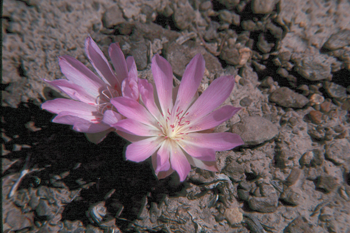The plant you see close up is a favorite native widely found in the Pacific Northwest. You’ll also find it in Southeast Alaska all the way to Southern California. And all across the northern United States, the Canadian provinces, including Washington State and Oregon.

Common Snowberry is an erect deciduous shrub which can grow 2’-5’ tall and spread out to 4’-6’ wide in a rounded thicket spreading by root suckers. Limbs are multi-branched, slender and have brown, shreddy bark.
When winter gives way to spring, tiny leaf buds unfold into simple but often irregular, oval-shaped leaves (1–3 cm long to 6 cm on new shoots). The new shoots often have larger leaves with hairy undersides and are the most irregular shaped. They can be deeply lobed. The leaf margins (edges) can be smooth, lobed, or wavy-toothed. Leaves grow opposite on multi-branched limbs. Tiny, inconspicuous pinkish flowers (4–6 mm long) hang in clusters on the ends of branches. Similar to other species in the Caprifoliaceae or honeysuckle family, snowberry flowers are distinctly bell-shaped.
In late summer and autumn, fertilized flowers develop into round green fruits, which ripen into puffy white berries (8–12 mm across). Eventually, the green leaves turn yellow and fall from the branches leaving behind the berries that persist on the shrub through winter.
Snowberry has long been grown as an ornamental shrub in home gardens. Winter is its most conspicuous season, where its white berries stand out against leafless branches. Its dainty pinkish flowers are also attractive. Symphoricarpos albus spreads by root suckers and is best given plenty of space to create a wild thicket. It tolerates poor soil and neglect. It is great for controlling erosion on slopes, riparian plantings, and for restoration.
Naturalized in the eastern United States, which means that it is not native to that region but over time it has proved to thrive and establish populations on its own volition and mine reclamation projects.
As for the scientific name? Symphoricarpos albus originates from the Greek word, symphorein, meaning bear together and carpos or karpos in Greek means fruit; and albus is white. Therefore, snowberry is named for its white fruit that grows or bears together in closely packed clusters.
Information of this particular post included the Plant Database of the United States Department of Agriculture. https://plants.usda.gov/home Both images were photographed by Bart Arenson in the woods of Vashon Island .







